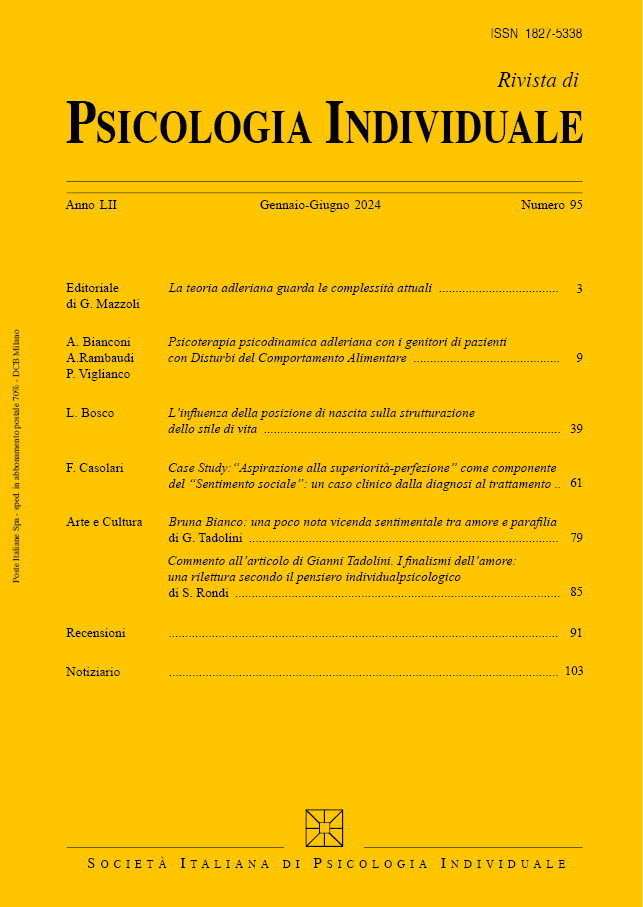THE BRIEF ADLERIAN PSYCHODYNAMIC PSYCHOTHERAPY IN ANOREXIA NER VOSA: DO PERSONALITY TRAITS PREDICT WEIGHT CHANGES? A PRELIMINARY STUDY
Keywords:
psicoterapia breve, anoressia nervosa, resistenza al trattamento, resistenza, ricerca in psicoterapia, brief-adlerian psychodynamic psychotherapyAbstract
Anorexia nervosa (AN) still represents a significant therapeutic challenge due to its complex pathogenesis centered on attachment and early care deficits, responsible for blocking the development of the self in adolescence. In fact, although it has been shown that some types of psychodynamic and cognitive-behavioral psychotherapy are able to adequately treat this disorder in the context of a multidisciplinary care approach, the response to treatments is still very variable and there are no specific indicators of the outcome of the treatment. Brief Adlerian psychodynamic psychotherapy (B-APP) is a brief psychotherapeutic approach applied for many years to the multidisciplinary treatment of anorexia nervosa with promising results. The present study aims to verify the outcome of a psychotherapeutic treatment with B-APP integrated with nutritional interventions and family counseling, on a group of 85 participants affected by anorexia nervosa, through the detection of changes in BMI, in the binge-purging behaviors, and in the personality traits measured by Cloninger's Temperament and Character Inventory. The study shows an overall improvement in BMI with an overcoming of the pathological threshold in the sample mean. The improvement is most significant in the group of AN participants with binge-purging (AN-BP). There is also a marked reduction in binge-purging in the AN-BP group. There are significant changes affecting some personological dimensions and sub-dimensions (reduction of the harm avoidance in the AN-BP participants, reduction of persistence and increase of extravagance in the AN-R). The data of this study highlight the effectiveness of B-APP in the treatment of AN. In particular, this therapeutic approach centered on welcoming the patient's frailties and on the constant calibration of the therapeutic distance appears particularly effective in overcoming the resistance of patients with AN-BP that the literature has often considered more resistant to treatment. Despite the limitations of the study, the evidence supports the application of B-APP in the multimodal treatment of AN






